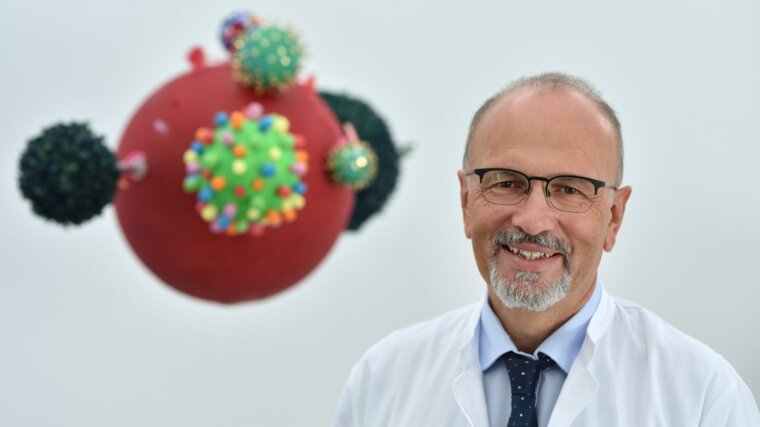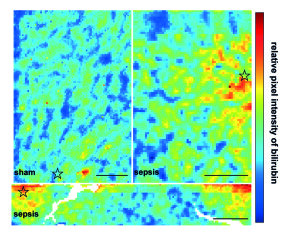
Prof. Michael Bauer
Image: Michael Szabo, UKJProf. Dr. Michael BAUER
Email: michael.bauer@med.uni-jena.de
Phone: + 49 3641 9-323101
Prof. Bauer is a member of several collaborative research groups in particular the LPI addressing the use of biophotonics for pathogen detection. They also study cellular functions in the continuum of infection, host response and the development of organ failure. He is chief-executive director of the Center for Sepsis Control Care (CSCC) at the Jena University Hospital.
Research Areas
Prof. Bauer heads a group addressing molecular mechanisms and prevention of organ failure in life-threatening infections. Key components of this research reflect strategies for early detection of pathogens and the ensuing immune response. Research interests include:
- Culture-independent pathogen detection (in cooperation with Prof. Popp)
- In vivo visualization of cellular redox state and function(s), such as dye uptake and excretion
- Nanomedicine
- Plasmonics to describe the host reponse
Teaching Fields
Prof. Bauer’s teaching covers aspects of pathophysiology and molecular aspects in critical care medicine with a focus on life-threatening infections:
- Fundamentals of oxygen transport, energy metabolism and redox state
- Systems biology of infection, sepsis and organ failure
Research Methods
The laboratories led by Prof. Bauer offer a full range of molecular biology techniques with special emphasis of transcriptome/array analysis and in vivo microscopy of solid organs, including:
- In vivo (fluorescence) microscopy to study cellular redox state, function and integrity
- Complementary application of Raman spectroscopy (in cooperation with Prof. Popp)
Recent Research Results
Micro-Raman spectroscopy to study hepatic metabolism and excretory function.
Picture: Research group of Michael BauerThe group focuses on changes in metabolism, functionality and signal transduction in various tissue and cell types, such as macrophages and hepatocytes, that control progression or resolution of host defense and organ failure. Extensive characterization of the host response to bacterial and fungal infections, in particular through immunophenotyping and metabolomics, carried out by combination of biophotonic with 'Omics'-approaches and subsequent modeling is used to define subtypes of the host response to life-threatening infections. This approach allows us to apply innovative therapies, in particular nanostructured carriers for delivery of kinase inhibitors as cargos to restore central cellular signalling functions.
[1] Press et al., Nature Commun. 5, 5565 (2014).
[2] Press et al., NPG Asia Materials 9, e444 (2017).
[3] Schaarschmidt et al., Theragnostics 8, 3766 (2018).

